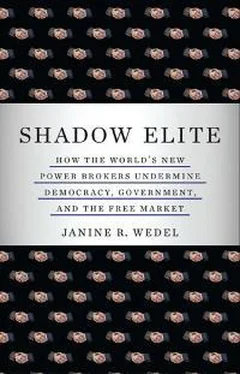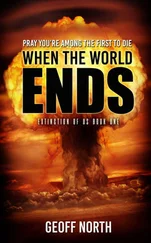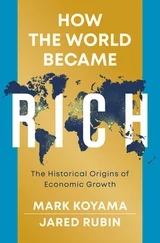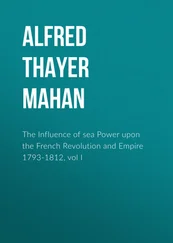Larger groups of political beings were also in full force and useful to the Neocon core in pushing the United States to war in Iraq. The core had fashioned alliances on selected issues with two powerful coalitions in particular: the Christian Right, beginning in the late 1970s; and what have been called “assertive nationalists” (also “hyper-nationalists” or “aggressive nationalists”), who believe American action should be unconstrained, who favor preemption versus deterrence and militarism versus diplomacy, and who share a distrust of the U.S. intelligence community and the State Department. Here the Neocon core found common ground and pursued overlapping efforts with other ideological sometime soul mates, including proponents of missile defense (with whom their funding from defense contractors also overlapped), and with prominent figures such as Dick Cheney, Donald Rumsfeld, and John Bolton. 32
The Neocon core’s sense of urgency—no matter the cost or external conditions—has helped it sustain itself, even as organizational and political environments change. Ironically, the core’s crisis mentality has propelled it to employ staples of flexian behavior, such as personalizing bureaucracy and relaxing rules, that recall the very communism the neoconservatives loathed: communist systems, of course, subordinated formal/legal procedures to the whims of their authorities. In the post–Cold War age of truthiness and evermore complex information technologies, the Neocon core has adopted additional flexian practices, privatizing information while branding conviction and juggling roles and representations, that place it on the cutting edge.
Let’s not confuse such a flex net with “Wise Men” or “kitchen cabinets.” The Neocon core outdoes them by the combination of its supreme interconnectedness, collective zeal, and mentality of mobilization to push along—through thick and thin, favorable presidential administration or not—shared do-or-die goals. This self-propelling quality, motivated by members’ ideology and marked by promotion of their worldview, is not only a hallmark of the Neocon core. It has played a more than supporting role, sometimes even a driving one, in major episodes of American foreign policy.
Sidelining Bureaucracy
In the mid-1970s, two key members of what would become the Neocon core joined with a larger group of assertive nationalists who were involved in the first of several efforts to change American foreign policy by producing and promoting alternative intelligence assessments. These assessments, it was hoped, would sideline those generated by U.S. government agencies, help justify the alternative foreign policy courses their supporters advocated, and sway decision makers to change course accordingly. The effort presented a challenge to professional authority, not only bureaucratic authority. Under pressure from critics on the right, CIA Director George H. W. Bush (appointed by President Gerald Ford) authorized a group of non-intelligence specialists—officially the Strategic Objectives Panel of the President’s Foreign Intelligence Advisory Board—to conduct an independent intelligence appraisal of the Soviet threat. 33Paul Wolfowitz was a member of (and Richard Perle was involved in) this 1976 first alternative intelligence exercise, which would be employed and seen as a model known to participants and detractors alike as “Team B”—a counterpoint to the CIA’s ostensible Team A.
The impetus for the effort arose from distrust of the policy of containment and a belief that the U.S. intelligence community was underplaying the Soviet threat. Albert Wohlstetter provided intellectual justification in two (1974 and 1975) Foreign Policy articles that took issue with the CIA’s assessment of the Soviet Union’s defense capability contained in its yearly National Intelligence Estimate (NIE). The agency routinely underassessed Soviet missile deployment, Wohlstetter wrote, and he warned that the United States risked being outdone militarily. 34This was fuel for the neoconservative view that America should be the prevailing military might.
The panel’s task was to evaluate the data and prepare its own report. The panel would be granted unprecedented entrée to highly sensitive CIA data pertaining to Soviet military capacity. 35
Enter Richard Perle. He had no formal part in Team B, but, as an aide to Senator Jackson, he had his fingerprints on the effort. Jackson recommended Harvard professor Richard Pipes, an eminent scholar of Russian history and a foremost critic of détente, to head Team B. This came about because, as Perle told me: “I was a talent scout, if you will. . . . I was aware of Pipes and his work and suggested he would be a good person.” 36Pipes’s understanding of current events was shaped by his perspective on the evolution of the Russian state and society. Pipes chose Wolfowitz, then perched at the Arms Control and Disarmament Agency, to be on the panel because, as Pipes told me, “Perle suggested to me his friend Wolfowitz.” 37While Perle was not on the panel and its conclusions were classified, he told me he knew everyone on Team B. “We were friends and colleagues, we talked all the time . . . and in detail.” 38
Although the Strategic Objectives Panel was supposedly unbiased, the makeup of Team B was weighted toward the conclusion that the CIA underestimated the Soviet threat. As Paul Warnke, an official at the ACDA around the time of the Team B effort, later wrote: “Rather than including a diversity of views . . . the Strategic Objectives Panel was composed entirely of individuals who made careers of viewing the Soviet menace with alarm.” 39Pipes himself appeared to agree. “We were to be a counterpoint to Team A,” he told a journalist. “In other words, the authorities said, ‘We are getting the same story all the time from the CIA. . . . Let’s get another group who have a different view, give them access to all of the evidence and see what they come up with.’ So, this was deliberate. We were not to balance Team A, but come up with the strongest possible argument to prove they are right or they are wrong.” Team B, of course, found them wrong. 40
Although Team B’s findings were supposed to be secret, they were leaked to the media. They were used as ammunition by cold warriors and kept vital through op-ed pieces and media interviews of panel members, as well as a media campaign conducted by the (second) Committee on the Present Danger. (That advocacy group, resurrected from its 1950s predecessor while Team B was at work, shared many members over the years with those in and close to the Neocon core.) However one judges the conclusions of the panel, the exercise had a decided impact. As Richard Pipes told me: “Carter’s nuclear strategy adopted Team B’s point of view.” 41
Team B had a lasting legacy. It set a precedent for alternative intelligence assessments grounded in gauging an adversary’s motives more than its actual capacities. The NIE, concluded the panel’s fifty-five-page report (two-thirds of which dealt with Soviet “objectives” rather than actual capacities), “substantially misperceived the motivations behind Soviet strategic programs, and thereby tended consistently to underestimate their intensity, scope, and implicit threat” [emphasis added]. This misperception, the report argued, “has been due in considerable measure to concentration on the so-called hard data.” By contrast, the authors acknowledged, the Team B report focused “on what . . . the Russians are striving for, without trying to assess their chances of success.” 42Team B, as Paul Wolfowitz later summed it up, “demonstrated that it was possible to construct a sharply different view of Soviet motivation from the consensus view of the [intelligence] analysts.” 43Favoring appraisal of motives over fact- and capacity-based analysis, the exercise helped construct a counterreality.
Читать дальше












